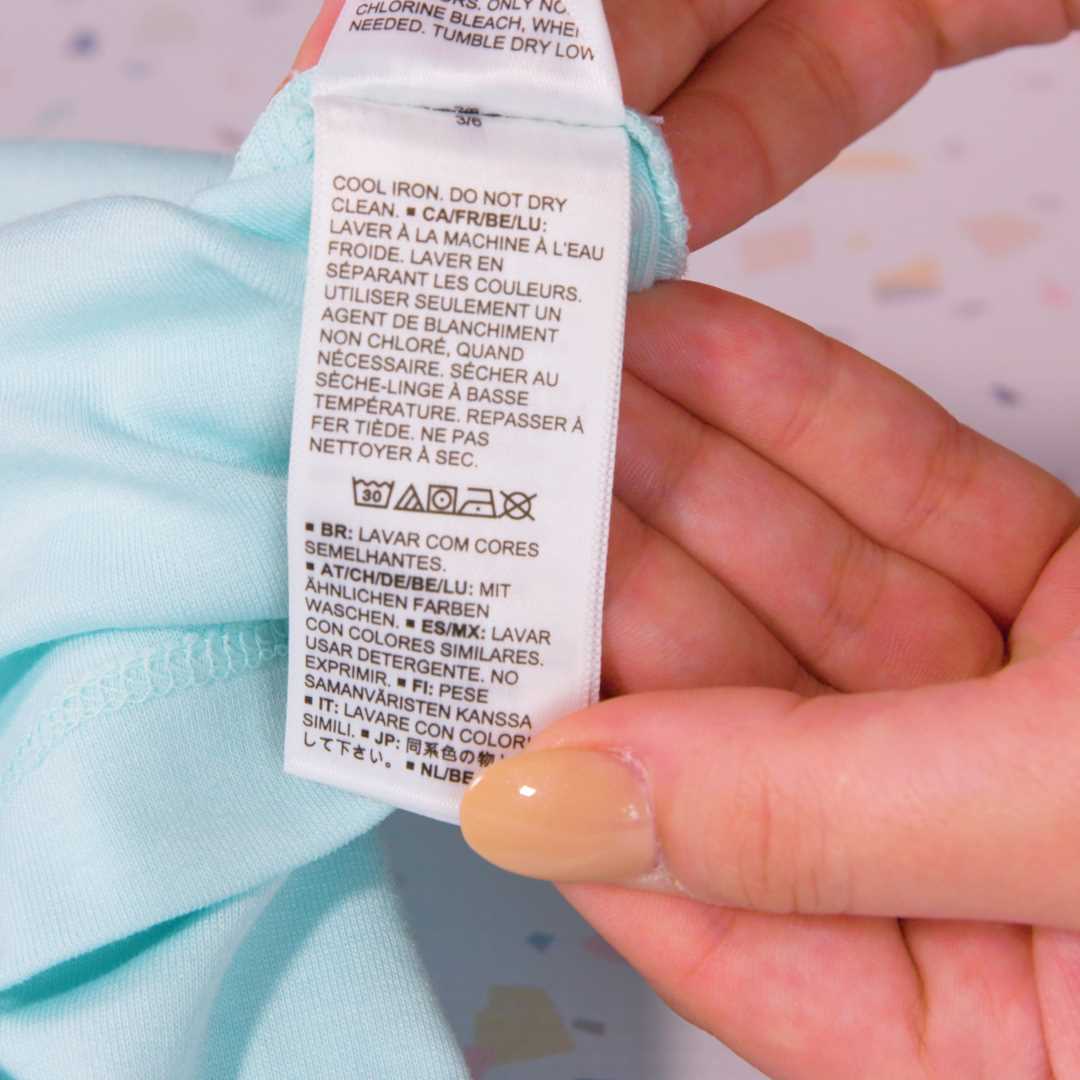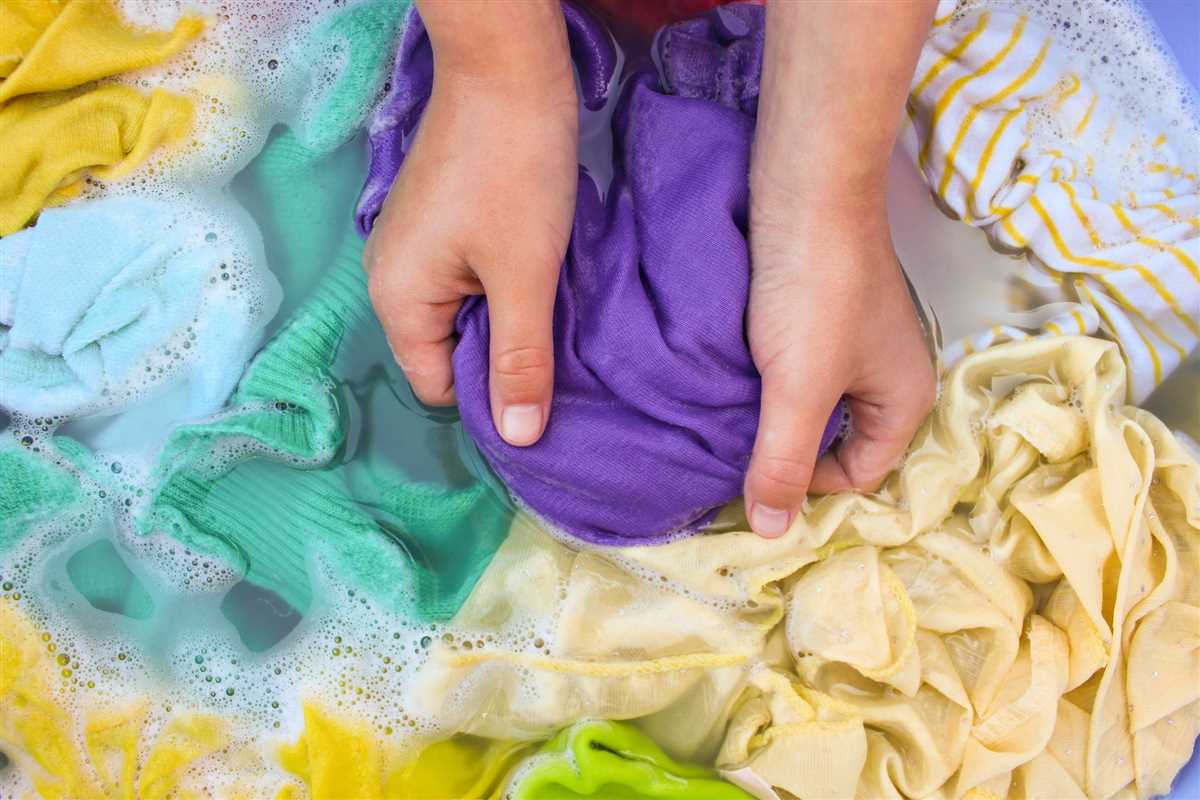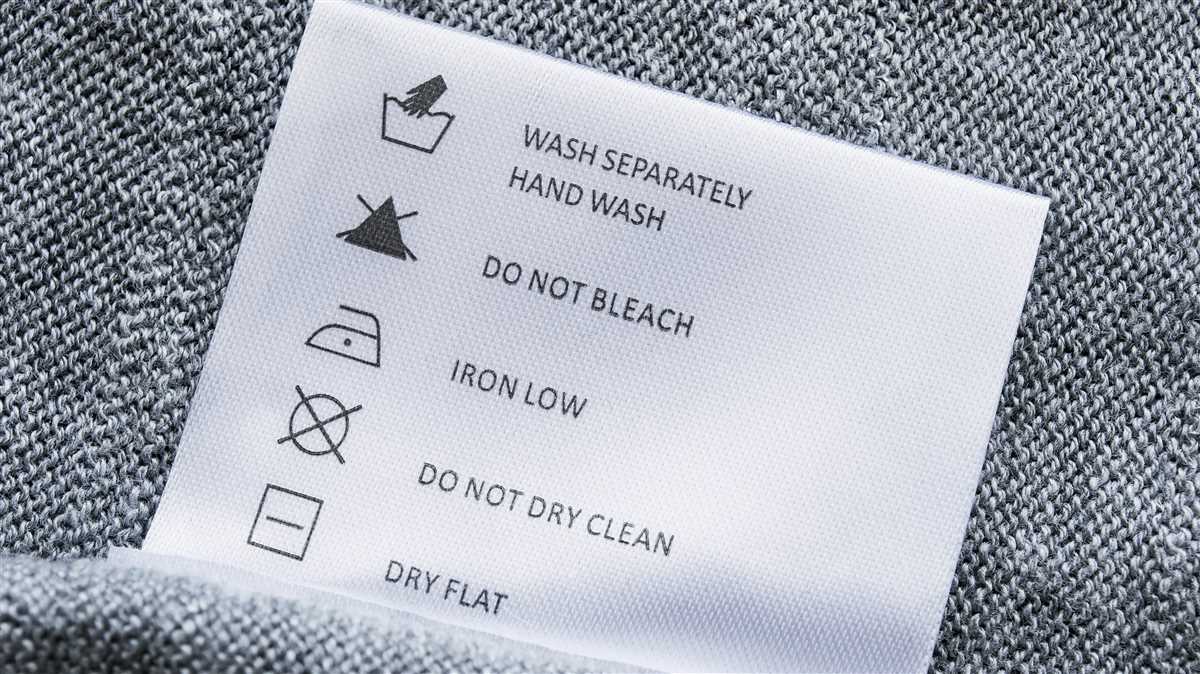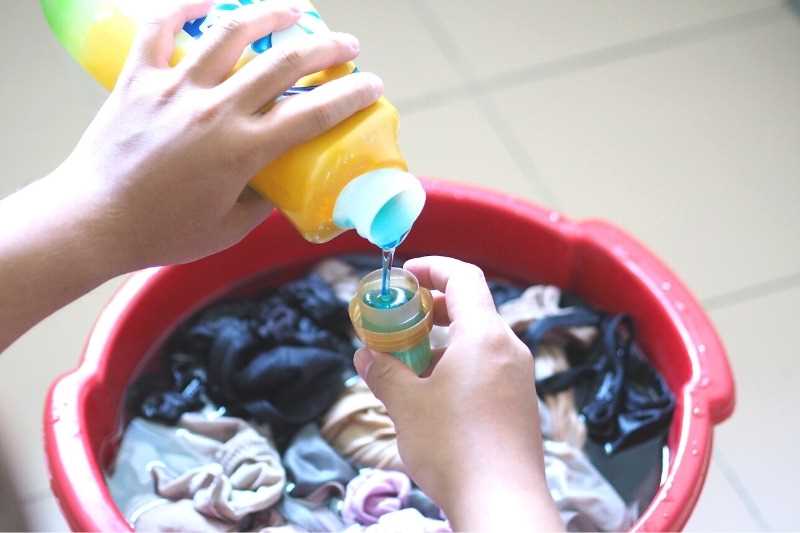




Hand washing clothes can be a convenient and effective way to clean your garments, especially if they are delicate or require special care. Whether you are travelling, don’t have access to a washing machine, or simply prefer hand washing, this step-by-step guide will help you achieve clean and fresh clothes.
Step 1: Sort your clothes
Before you begin hand washing your clothes, it’s important to sort them by color and fabric type. This will help prevent color bleeding and ensure that each garment receives the appropriate care. Separate whites from colors and delicate fabrics from more durable ones.
Step 2: Choose the right detergent
When it comes to hand washing clothes, using the right detergent is crucial. Look for products specifically designed for hand washing, such as the ones available in the UK. These detergents are typically gentle on fabrics, leave a pleasant scent, and effectively remove dirt and stains.
Step 3: Fill a basin with water
Fill a basin or sink with lukewarm water. Avoid using hot water, as it can shrink or damage certain fabrics. Add a small amount of detergent and agitate the water to create suds.
Step 4: Soak and agitate
Submerge your clothes in the soapy water and gently agitate them to loosen dirt and grime. Allow the clothes to soak for a few minutes to ensure thorough cleaning.
Step 5: Rinse and repeat
Drain the soapy water and refill the basin with clean water. Rinse each garment thoroughly until no soap residue remains. If necessary, repeat this step to ensure all detergent is removed.
Step 6: Gently squeeze out water
Once you have rinsed your clothes, gently squeeze out the excess water. Avoid wringing or twisting the fabric, as this can cause stretching or damage. Instead, press the garment against the side of the basin or use a towel to absorb moisture.
Step 7: Air dry
Finally, lay your clothes flat or hang them to air dry. Avoid direct sunlight, as it can fade colors. Check the care labels on your clothing for any specific drying instructions.
By following these simple steps and using the appropriate UK products, you can hand wash your clothes with confidence, knowing they will come out clean and well-cared for.
Step-by-Step Guide to Hand Washing Clothes: Essential Tips
Hand washing clothes is a useful skill to have, whether you are trying to save money, extend the life of delicate garments, or simply don’t have access to a washing machine. Here is a step-by-step guide to help you wash your clothes by hand:
1. Sort and Pre-Treat
- Start by sorting your clothes into similar colors and fabrics. This will help prevent colors from bleeding onto each other and ensure that delicate items are treated gently.
- Check for any stains or spots on the clothes and pre-treat them before washing. You can use a stain remover or create your own mixture using vinegar, baking soda, or lemon juice.
2. Fill the Sink or Basin
- Fill a clean sink or basin with lukewarm water. Avoid using hot water as it can damage some fabrics.
- Add a small amount of gentle detergent suitable for hand washing. Follow the instructions on the detergent bottle for the correct amount to use.
3. Soak and Agitate
- Place the clothes in the water and gently agitate them. Make sure that all the clothes are fully submerged.
- Allow the clothes to soak for about 10-15 minutes. This will help loosen dirt and grime.
4. Hand Washing
- Gently rub the fabric together to clean the clothes. Pay extra attention to stained areas or areas that are prone to getting dirty, such as collars and cuffs.
- Do not scrub or twist the clothes too vigorously, as this can damage the fabric.
5. Rinse
- Drain the soapy water from the sink or basin.
- Rinse the clothes thoroughly under clean, running water to remove any remaining detergent.
- Ensure that all the soap is rinsed out, as residual detergent can cause skin irritation and damage the fabric over time.
6. Squeeze and Dry
- Gently squeeze out the excess water from the clothes. Do not wring or twist them, as this can stretch or misshape the fabric.
- Place a clean towel on a flat surface and lay the clothes flat on top of it.
- Roll up the towel with the clothes inside to remove more moisture.
7. Air Dry
- Hang the clothes to air dry. Use a clothesline, drying rack, or hangers depending on the type of garment.
- Avoid direct sunlight, as it can fade colors and damage certain fabrics.
- Allow the clothes to dry completely before wearing or storing.
Hand washing clothes may require more time and effort compared to using a washing machine, but it can be a rewarding and effective way to care for your garments. By following this step-by-step guide, you can ensure that your clothes are clean, fresh, and well-maintained.
Choosing the Right Products for Hand Washing Clothes in the UK
When it comes to hand washing clothes in the UK, using the right products can make a significant difference in the cleaning efficiency and longevity of your garments. Here are some essential products to consider:
1. Laundry Detergent

Start by choosing a high-quality laundry detergent specifically designed for hand washing. Look for products that are gentle on fabrics but tough on stains. There are many options available in the UK market, including liquid and powder detergents.
2. Stain Remover
For stubborn stains, using a stain remover can help lift the dirt and grime effectively. Look for stain removers that are safe for use on various types of fabrics and colors. Some stain removers are designed specifically for specific types of stains, such as grease, ink, or food.
3. Fabric Softener
To keep your clothes feeling soft and smelling fresh, consider using a fabric softener. It can help reduce static cling, prevent wrinkles, and give your clothes a pleasant scent. Look for fabric softeners that are suitable for hand washing and suitable for the specific fabrics you’re laundering.
4. Hand Wash Wool Detergent
If you’re hand washing delicate wool garments, using a gentle wool detergent is crucial. These detergents are specially formulated to clean and protect wool fibers and maintain their softness. Look for wool detergents that are pH-neutral and free from harsh chemicals.
5. Bleach Alternative

When hand washing white or heavily soiled garments, a bleach alternative can help brighten and whiten the fabric. Look for bleach alternatives that are safe for use on fabrics and colors and gentle on the skin.
6. Gloves
While not a product for laundering clothes, gloves are essential when hand washing garments. They protect your hands from harsh chemicals in detergents or stain removers and prevent your skin from drying out. Look for gloves that are durable, waterproof, and comfortable to wear.
7. Drying Rack
After washing your clothes, it’s important to dry them properly. Using a drying rack can help maintain the shape of your garments and prevent them from stretching out. Look for drying racks that are sturdy, easy to assemble, and have enough space to hang multiple items.
8. Delicates Bag
If you have delicate items such as lingerie or hosiery, using a delicates bag can protect them from getting damaged during the washing process. Look for bags that are made from fine mesh fabric and have a reliable zipper closure.
In conclusion, selecting the appropriate products for hand washing clothes in the UK can ensure proper cleaning and care for your garments. Consider the specific needs of your fabrics and stains before choosing the right laundry detergent, stain remover, fabric softener, and other accessories. With the right products, your hand-washed clothes will look and feel their best for a long time to come.
Gathering Supplies for Hand Washing Clothes: A Detailed Checklist
Before you start hand washing your clothes, it’s essential to gather all the necessary supplies. Here is a detailed checklist to help you get organized:
1. Detergent
Make sure you have a suitable detergent for hand washing, such as a hand wash detergent or a gentle laundry soap. Avoid using regular laundry detergents, as they can be too harsh on delicate fabrics.
2. Stain Remover
In case your clothes have stubborn stains, it’s a good idea to have a stain remover on hand. Choose a reputable stain remover that is safe to use on different types of fabrics.
3. Basin or Sink

You will need a clean basin or sink to wash your clothes. If you’re using a sink, ensure it’s thoroughly cleaned beforehand to prevent any contamination.
4. Water
Fill your basin or sink with warm water. The temperature should be comfortable enough for you to handle without scalding your hands.
5. Clothesline or Drying Rack
After washing, you’ll need a place to hang your clothes to dry. Set up a clothesline or drying rack in a well-ventilated area. If you have limited space, you can also use hangers or a shower rod.
6. Clothespins
If you’re using a clothesline, you’ll need clothespins to hang your clothes. Choose sturdy clothespins that won’t easily break or leave marks on your garments.
7. Delicate Wash Bag or Pillowcase
If you have delicate items like lingerie or sweaters, consider using a mesh delicate wash bag or a pillowcase to protect them during the washing process. This prevents any snagging or stretching.
8. Towels or Rags
Have a few clean towels or rags nearby. You may need them for spot drying, absorbing excess water, or for padding delicate items when laying them flat to dry.
9. Gloves (Optional)
If you have sensitive skin or want to protect your hands from hot water or chemicals in the detergent, consider using gloves. Choose gloves that are waterproof and resistant to chemicals.
10. Lint Roller (Optional)
A lint roller can come in handy for removing lint, pet hair, or any other debris from your clothes before washing them. It helps keep your clothes looking clean and fresh.
11. Laundry Stain Chart (Optional)
If you often deal with different types of stains, it can be helpful to have a laundry stain chart on hand. This chart provides guidance on how to treat specific stains effectively.
By gathering all the necessary supplies beforehand, you’ll be well-prepared to hand wash your clothes and achieve great results!
Prepping Your Clothes for Hand Washing: Simple Steps to Follow
Before diving into the process of hand washing your clothes, it’s important to properly prep them to ensure the best outcome. Following these simple steps will help you achieve cleaner clothes and extend their lifespan:
Step 1: Sort your Laundry
- Separate your laundry into different piles according to their colors and fabric types. This will prevent color bleeding and damage to delicate fabrics.
- Sort your clothes into three main categories: whites, light colors, and dark colors.
- Further categorize delicate fabrics that require special care, such as silk or wool.
Step 2: Check for Stains
- Inspect each item of clothing for any stains or spots.
- Pre-treat the stains using a stain remover or a gentle detergent.
- Gently rub the stain remover into the fabric using a soft brush or your fingers.
Step 3: Turn Clothes Inside Out

- Before placing your clothes into the water, turn them inside out.
- This helps to protect the color and finish of the fabric.
Step 4: Close Zippers and Buttons

- Zip up any zippers and button up any buttons on your clothes.
- This prevents them from snagging or getting tangled during the hand washing process.
Step 5: Use the Right Water Temperature
- Check the care label on each garment to determine the appropriate water temperature.
- For most clothes, lukewarm water (around 30-40 degrees Celsius) is suitable.
- Hot water can cause colors to bleed or shrink certain fabrics.
Step 6: Choose the Correct Detergent
- Select a gentle detergent specifically designed for hand washing.
- Avoid using regular laundry detergent, as it can be too harsh for delicate fabrics.
- Follow the instructions on the detergent packaging for the recommended amount to use.
Step 7: Pre-Dissolve the Detergent
- In a separate container, dissolve the detergent in water before adding the clothes.
- This helps to evenly distribute the detergent and prevents it from leaving residue on the clothes.
Step 8: Soak Your Clothes
- Place your clothes into the container with the dissolved detergent.
- Gently agitate the clothes in the water to ensure all areas are submerged.
- Allow your clothes to soak for at least 15 minutes, or longer for heavily soiled items.
Step 9: Hand Wash Each Item
- Remove one garment at a time from the soaking water.
- Gently rub and squeeze the fabric to remove dirt and grime.
- Pay extra attention to cuffs, collars, and any stained areas.
Step 10: Rinse Thoroughly
- Rinse each item under clean, running water until the water runs clear.
- Make sure to remove all traces of detergent to avoid leaving residue on the clothes.
- Squeeze out excess water gently, avoiding wringing or twisting the fabric.
Step 11: Dry your Clothes

- Place your washed clothes on a clean towel or a drying rack.
- Reshape the garments if necessary.
- Avoid direct sunlight, as it can cause colors to fade.
By following these simple steps, you can properly prep your clothes for hand washing and help keep them looking fresh and clean for longer.
Hand Washing Clothes: A Detailed Process for Optimal Results
Hand washing clothes can be a delicate task that requires careful attention to ensure optimal cleaning results. This step-by-step guide will walk you through the process of hand washing your clothes, using UK products that are known for their effectiveness. Follow these steps to ensure your clothes remain clean, fresh, and in good condition.
Materials Needed:
- Bucket or basin for washing
- Mild detergent suitable for hand washing
- Stain remover (if necessary)
- Water (preferably warm or at room temperature)
- Gentle fabric softener (optional)
- Hangers or drying rack
Step 1: Sort Your Clothes
Begin by separating your clothes into different piles based on their color and fabric type. This will help prevent color bleeding and ensure each item receives the appropriate treatment during washing.
Step 2: Pre-Treat Stains (If Necessary)
If you have any stains on your clothes, apply a small amount of stain remover to the affected areas. Gently rub the stain remover into the fabric and let it sit for a few minutes to allow it to penetrate the fibers.
Step 3: Fill the Bucket with Water
Fill your bucket or basin with water, ensuring it is at a comfortable temperature for hand washing. If you are unsure about the temperature, opt for lukewarm or room temperature water.
Step 4: Add Detergent
Add a small amount of mild detergent suitable for hand washing to the water. Follow the instructions on the detergent bottle to determine the appropriate amount.
Step 5: Submerge and Soak
Submerge your clothes in the soapy water, ensuring they are fully covered. Gently agitate the clothes with your hands to ensure the detergent penetrates the fabric. Let the clothes soak for approximately 15 to 30 minutes to allow the detergent to work effectively.
Step 6: Hand Wash
After the soaking time has elapsed, take each item one at a time and gently rub the fabric together to remove dirt and grime. Pay extra attention to stained areas and collar cuffs. Avoid scrubbing too vigorously, as this may cause damage to the fabric.
Step 7: Rinse
Once you have finished hand washing all your clothes, empty the soapy water and refill the bucket with clean water. Rinse each item thoroughly to remove any remaining detergent residues.
Step 8: Apply Fabric Softener (Optional)
If desired, add a small amount of gentle fabric softener to the final rinse water. This will help leave your clothes feeling soft and smelling fresh. Be sure to follow the instructions on the fabric softener bottle for the appropriate amount to use.
Step 9: Squeeze Out Excess Water
After rinsing, gently squeeze out the excess water from each garment. Avoid wringing or twisting the fabric, as this may misshape or stretch the clothes.
Step 10: Dry Your Clothes
Hang your clothes on hangers or place them on a drying rack to air dry. Be sure to evenly distribute the weight of the wet clothes on the hangers to prevent stretching. Avoid exposing delicate fabrics to direct sunlight, as this may cause color fading or fabric damage.
Step 11: Iron or Fold
Once your clothes are completely dry, you can choose to iron them or fold them for storage. Follow the care instructions on each garment regarding ironing temperatures and settings.
By following this detailed process for hand washing your clothes, you can ensure optimal cleaning results and prolong the life of your favorite garments. Remember to always read and follow the care instructions on your clothes’ labels for specific washing recommendations.
Drying and Storing Hand Washed Clothes: Best Practices

After successfully hand washing your clothes, it’s important to dry them properly and store them in a way that helps maintain their quality. Here are some best practices for drying and storing hand washed clothes:
1. Drying

Proper drying techniques are crucial to prevent damage to your hand washed clothes. Here’s what you should do:
- Gently squeeze out excess water from the clothes.
- Avoid wringing or twisting the garments, as this can stretch or damage the fabric.
- Reshape the clothes if necessary, stretching them back into their original shape.
- Lay the clothes flat on a clean, dry towel or hang them up to dry.
- Avoid direct sunlight, as it can fade colors and damage certain fabrics.
- Allow the clothes to air dry completely before moving on to the next step.
2. Ironing and Steaming
If your hand washed clothes require ironing or steaming, here’s what you need to keep in mind:
- Follow the garment’s instructions for ironing or steaming, if provided.
- Use a low heat setting on your iron or steamer, especially for delicate fabrics.
- Iron or steam the clothes gently, using smooth and even strokes.
- Avoid applying too much pressure, as this can cause damage.
- Hang the clothes immediately after ironing or steaming to prevent wrinkles.
3. Storing
Storing your hand washed clothes properly will help them retain their shape and prevent wrinkles. Here are some tips for storing:
- Only store clean, dry clothes to prevent odors and mold growth.
- Use breathable garment bags or cotton pillowcases to protect the clothes.
- Avoid using plastic bags or covers, as they can trap moisture and cause mildew.
- Fold the clothes neatly and stack them in drawers or on shelves.
- Avoid overcrowding the storage space, as it can lead to wrinkles and creases.
- Rotate the clothes regularly to prevent fabric deterioration.
By following these best practices for drying and storing hand washed clothes, you can prolong their lifespan and keep them looking their best.
FAQ
What are the benefits of hand washing clothes?
Hand washing clothes has several benefits. It is gentler on delicate fabrics and helps to preserve their quality and color. It also allows you to have more control over the washing process and gives you the opportunity to effectively remove stains. Additionally, hand washing can help save money on utility bills and is more environmentally friendly compared to using a washing machine.
What products do I need to hand wash clothes?
To hand wash clothes, you will need a gentle laundry detergent, a basin or sink, clean water, and a clothesline or drying rack. It’s also recommended to have a stain remover and fabric softener, although they are not essential.
Can I hand wash all types of clothes?
Yes, you can hand wash most types of clothes. However, it’s important to check the care label on each garment before washing to ensure that it is suitable for hand washing. Some delicate fabrics, such as silk or cashmere, may require specialized care and should be dry cleaned instead.
How long does it take to hand wash clothes?
The time it takes to hand wash clothes can vary depending on the number of items, their size, and the level of dirtiness. On average, it can take anywhere from 30 minutes to an hour to complete the hand washing process, including soaking, washing, rinsing, and drying.













